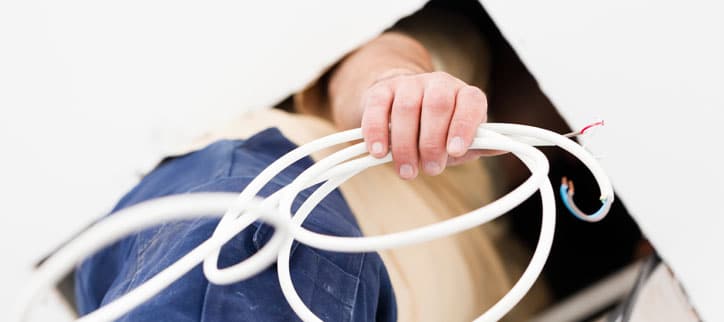Electricity is crucial for every American home today. From where we keep our foods to how we heat and light our homes, we power our lives with it. So what exactly is the process of wiring your residential home? We’re here to explain it, step-by-step, so you can feel secure from wiring day 1 for forever in your home. Here’s how it goes.
Temporary Wiring
For a newly built home, wiring is essential to providing electricity. But if the home doesn’t have power, how can we use our electric tools? A temporary electricity source, of course. We start our residential wiring process by placing a temporary electric pole to power all the machinery while on the construction site. Generators also can be used during this stage instead of an electrical pole, depending on certain circumstances.
Underground Conduit
Known by residential electricians as the wet phase, electrical conduits are laid down before the concrete is laid. This is the only step in the wiring process that is conducted while wet and it usually can be completed in just a few hours.
Circuit Wiring
This stage occurs after floors, walls and windows are in place, but sheet rock has yet to be installed. The wiring plan is set during this phase and all materials are ordered. Wiring from the electric box to the walls is completed during this phase. Also, since the roof will be installed during this phase, certain elements will also be installed. This can include special lights, exhaust fans and security systems. Any entertainment system wiring is also completed during this stage. Depending ono the size of your home, this can take anywhere from a few days to a few months to complete.
The Details
All of the smaller details are completed during this stage. These can include temperature controls, lights and switches. Usually this phase takes just one day.
The Finish
The last stage completes the wiring of the home, including fans, remaining lights and switches, receptacles, external electrical systems and HVAC units. This is also when appliances are affixed and installed. Again, depending on the size of your home, this process can take a few days to a few months.
Tweaks and More
Often referred to as the testing stage, this is when electricians ensure everything is working properly and is ready for the family to move in. They also arrange a government inspection during this time. If anything amiss is discovered after the owner moves in, usually it can be fixed without issue.
Have more questions about the residential wiring process? Give us a call. We have specialized residential electricians ready to help.


T he article is very helpful